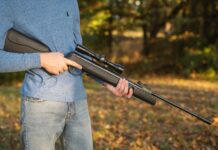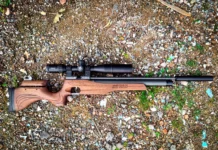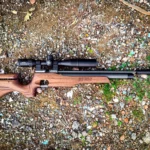<?xml encoding=”utf-8″>
Weed management is rarely at the top of anyone’s list of desirable to-dos. Bending over and pulling weeds is a lot of work, and it’s rarely a permanent solution. Spraying weed killer isn’t the best alternative since the chemicals aren’t good for grass or the pollinators that may land or feed on those weeds.
Instead of breaking your back or introducing harmful chemicals into your lawn’s ecosystem, consider smoking out those pesky plants with a weed torch. These handheld torches run on propane and focus a small but scorching flame on stubborn invasive weeds. This guide helps shoppers choose the best weed torch for a particular yard or garden.
We tested the following weed torches in our lawns, vegetable gardens, and ornamental landscape beds. Read on to find out how we selected these models, how they performed on our backyard tests, and which may be the best weed torch for your lawn and garden maintenance needs.
- BEST OVERALL: Red Dragon VT 1-32C 25,000 BTU Mini Weed Dragon Torch
- RUNNER-UP: Flame King YSN340K Auto Ignition Propane Torch
- BEST BANG FOR THE BUCK: Flame King YSNPQ810CGA Propane Torch Weed Burner
- BEST HEAVY-DUTY: Red Dragon BP 2512 SVC 400,000 Backpack Weed Torch
- BEST FOR GRAVEL: Gaspony TB-PFP Power Flame Pro 500,000 Propane Torch
- BEST FOR PAVERS: Flame King YSNPQ820S Wide Flame Propane Torch Burner
- BEST FOR GARDEN: Houseables 20,000 BTU Weed Torch Propane Burner
- ALSO CONSIDER: Ausail 50,000 BTU Weed Torch Propane Burner
Table of Contents
How We Tested the Best Weed Torches
We set up our weed torch testing regimen to simulate real-world working conditions. We spent more than 6 hours, or an average of about 45 minutes per torch, in testing. In addition to the operational tests outlined below, we evaluated ease of assembly, operator comfort, effectiveness in killing weeds, and durability. After assembling each torch according to the manufacturer’s instructions, we installed fuel tanks, tested for leaks, and recorded the weight and dimensions of each unit.
We assigned specific areas of the lawn, vegetable garden, and landscape beds to specific torches and labeled the areas accordingly. Each area contained similar coverage of weeds and desirable plants, and the terrain was also comparable from one plot to the next. One at a time, we lit the torches and treated the assigned spaces. Walking at a slow pace, we passed the flame across any weed leaves and stems without stopping. The intense heat desiccated the green leaves, and there was no need to char them.
After the treatment, we evaluated the weed dieback and monitored for regrowth. We inspected each space 3, 7, and 14 days after the initial treatment. After recording the Day 14 observations, we treated each area a second time. Finally, we entered our observations on a scoring rubric to help clarify an overall evaluation and award recommendations for each tool.
Our Top Picks
We’ve identified and tested some of the best weed torches on the market. Our lineup includes compact tools, heavy-duty models, and high-powered torches for a broad spectrum of property types and users. Read the individual product reviews ahead to learn more about them and to find the best option for specific uses.
Jump to Our Top Picks
What to Consider When Choosing a Weed Torch
Between how a torch works and lights to its size and features, choosing this gardening tool does take a bit of background research. It’s important to understand how these tools function and to evaluate the area to be treated before scorching those dandelions. The following are a few important shopping considerations to keep in mind while searching for the best weed torch.
Lightweight vs. Heavy-Duty
There are two styles of weed torches: lightweight and heavy-duty. Lightweight weed torches, equipped with bent tubes that attach to a small 1-pound propane gas canister, are the more portable option. Heavy-duty torches are for large-scale jobs and have hoses that can connect to a full-size 20-pound tank.
Choosing between the two styles is really a matter of preference, but here are a few points to help decide between the two.
Lightweight torches
Pros
- Easily portable
- User-friendly
- Operate with lower temperatures
Cons
- Lack volume for extended use
- Do not use refillable tanks
Heavy-duty torches
Pros
- Offer plenty of volume for long burns
- Powerful
- May have adjustable flame
- Use refillable propane tanks
Cons
- Heavy and difficult to carry around
- May be noisy
Ignition Methods
There are generally two ways to light a torch: via built-in igniters or manual strikers.
Built-in igniters work similarly to the striker used to light a barbecue grill. They’re usually attached to the tube and feature a push-button spark. With the gas turned on, the striker safely lights the flame at the end of the tube. The pressure of the gas pushes the flame out to the end of the torch, and then it’s ready to kill weeds.
Manual strikers can be a little trickier to use. Similar to the strikers used in some high school chemistry classes, manual strikers need to be in proximity to gas when struck to light the flame. This could make some DIYers nervous, in which case a built-in igniter might be the better option.
Hose Length
When considering weeding tools, it’s important to think about the size of the area that needs to be treated. Most heavy-duty torches are meant to run on large 20-pound propane tanks, so hose length can affect maneuverability among the weeds. In general, a 10-foot hose is ideal. This length is long enough to cover a wide area, yet short enough to prevent the user from tripping or falling.
Those needing to cover a large area of land while using the torch may wish to purchase an additional cart or dolly to hold the heavy propane tank. The wheels will make moving it across the yard easier.
Bell
Some weed torches are equipped with a bell-shaped shroud at the end of the torch. This bell helps the torch to retain heat and direct the flame, creating a more efficient burn.
While efficiency is always a bonus, it’s not always necessary when it comes to weed torches. It might take a little longer to kill weeds using a lightweight model without a bell, but it’s usually only a difference of a few seconds.
A bell also helps shield other plants from the intense heat created by the flame. If the plan is to work with a torch around sensitive plants, consider a torch with a bell. Keep in mind, however, that using a torch of any kind in a mulch-laden flower bed is a bad idea.
Variable-Flame Control
The ability to control the flame is another important factor to consider when it comes to purchasing a new weed burner, as too much heat may cause the user to unintentionally burn valuable plants with a large flame. Plus, without an adjustable flame, users may run through a canister of propane before covering their entire yard.
Most of the products featured in this guide include control valves that can be dialed up or down to throttle the amount of fuel passing through the wand. Some heavy-duty torches feature boost handles that can temporarily increase the size and temperature of the flame. Simply squeeze the valve to increase the volume and pressure for tougher weeds and release it to return it to its normal setting.
Heat Rating
It’s important to review the heat rating for potential weed torches. Rather than using degrees Fahrenheit (which won’t describe output of the torch), torch heat ratings are quantified using BTUs, and there is a wide range of BTU ratings available.
Most weed burnersproduce at least 20,000 BTUs, which is plenty of heat for burning a weed. Heavy-duty models can produce up to 500,000 BTUs, which isn’t usually needed for common yard weeds. A torch that offers between 20,000 and 100,000 BTUs is often more than adequate.
Safety Features
As a general rule, weed torches aren’t inherently safe. They don’t have a safety valve, they produce lots of heat, and their nozzles get very hot. Gloves and safety glasses help protect users, but there simply isn’t much one can do to make a weed tool like this 100 percent safe.
Features such as built-in gas-control valves, built-in trigger starts, and hoses of safe lengths can reduce some of the risks involved in burning yard weeds. A built-in igniter ensures that the user’s hand is kept a safe distance away from the flame, while the gas-control valve helps throttle back the amount of flame the torch produces to keep things under control. Using a hose of proper length can prevent users from tripping.
Crucial safety tip: Never use a torch or flame of any sort to remove poison ivy. The oil that poison ivy produces (urushiol) is what causes skin blisters and other painful reactions. When the plant burns, that oil attaches to the smoke particles and can travel through airways and land on skin, causing potentially serious health hazards.
Tips for Using a Weed Torch
In general, a quick blast of heat will break down the cells that weeds need to grow, even if they don’t turn completely black. The best time to use a weed torch is on a wind-still day after a good soaking rain. While weed torches are safe if used properly, the soaked terrain will help reduce the risk of an accident, and low wind speeds help keep the flames controllable.
Always keep a hose or a bucket of water nearby while burning weeds, and remove leaves and debris from the area before torching the weeds. Leaves and debris will burn much faster than weeds, and passing over them with a lit torch can lead to an unintended fire in no time.
- A quick pass of heat is often enough to kill a weed without charring it to embers.
- Use on a calm day with no wind and after it has rained to torch weeds safely.
- Keep water on hand and remove leaves and debris before torching weeds.
FAQs
If you want more info about buying or using the best weed torches, read on for answers to some of the most frequently asked questions about these garden tools.
Q. How does a weed torch work?
Weed torches use propane-fueled flames to cook the cells inside of a weed, inhibiting its ability to use sunlight (or photosynthesis) for energy and growth.
Q. How hot do weed torches get?
Weed burners vary in their heat output, with some models producing more than others. Common torches range between 20,000 and 500,000 BTUs.
Q. Can a weed torch help with poison ivy?
Burning poison ivy is a bad idea. The oil in poison ivy, oak, or sumac that causes itchy blisters is called urushiol. If you burn these plants, the oil attaches itself to the smoke particles, which can land in your lungs and cause serious respiratory irritation.
Q. Do I need to reduce the weed to ash or simply brown it to destroy it?
Generally speaking, burning the weeds to charred ash isn’t necessary. Simply heating the plant for a few seconds until it wilts should be enough to destroy it.
Q. How do you start a weed burner?
Starting a weed burner is typically very easy. Start by attaching the propane to the wand, or the hose to the propane tank, depending on the model. Next, open the valve on the propane tank, if it has one. Then open the valve on the wand to let some gas pass through. Finally, press the built-in igniter or use a striker held (safely) near the nozzle while striking to light the weed torch.
Why Trust Bob Vila
BobVila.com has been a trusted resource for DIY information since 1996. Bob Vila has been America’s Handyman since 1979. As the host of beloved and groundbreaking TV series including “This Old House” and “Bob Vila’s Home Again,” he popularized and became synonymous with “do-it-yourself” home improvement. Over the course of his decades-long career, Bob Vila has helped millions of people build, renovate, repair, and live better each day—a tradition that continues today with expert yet accessible home advice.
The Bob Vila team distills need-to-know information into project tutorials, maintenance guides, tool 101s, and more. Our hands-on product reviews detail real-world results based on hours of thorough testing by subject-matter experts. These home and garden experts then thoroughly research, vet, and recommend products that support homeowners, renters, DIYers, and professionals in their to-do lists.










































